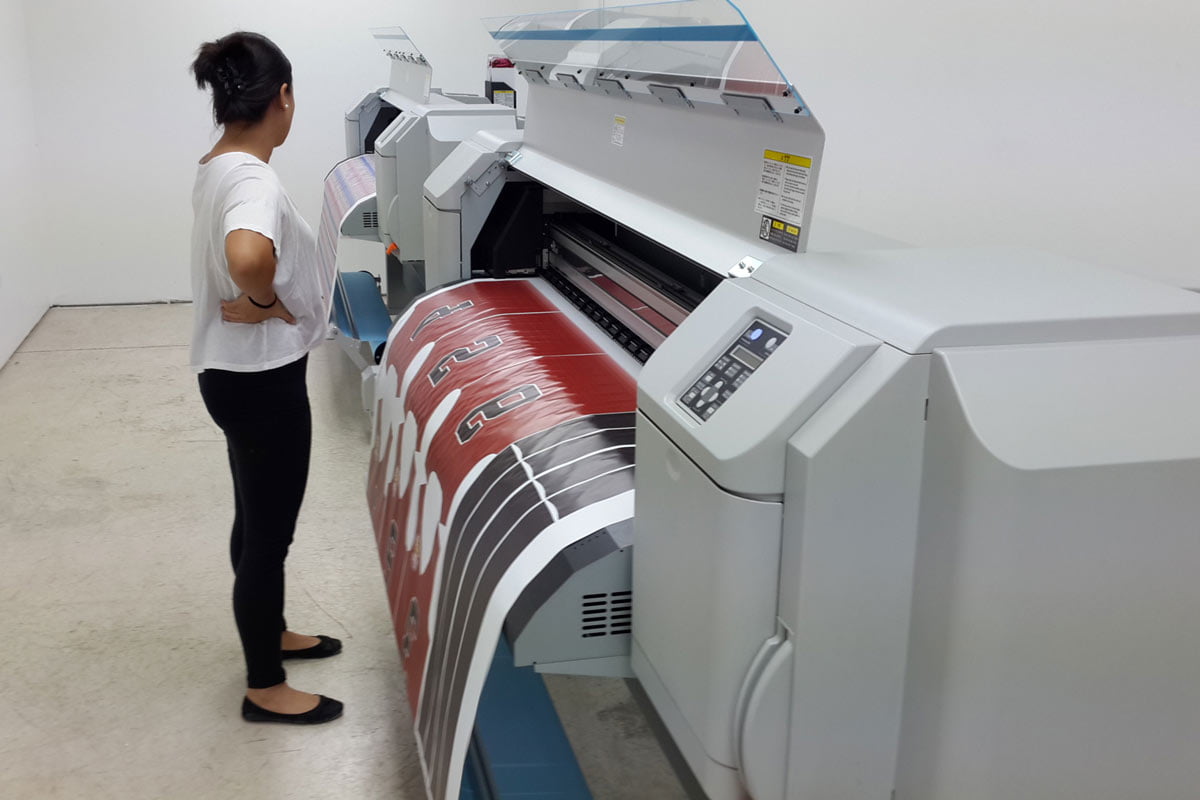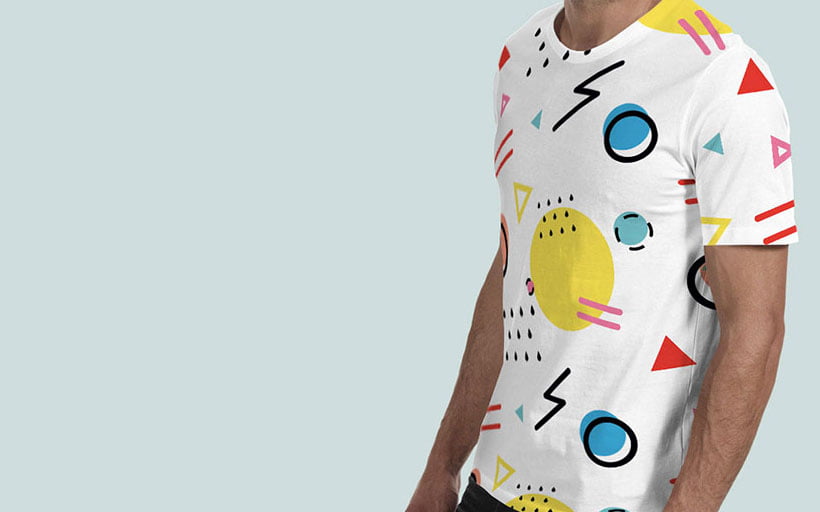Screen Printing Strategies: Grasping the Art for Branded Clothing
Screen Printing Strategies: Grasping the Art for Branded Clothing
Blog Article
A Comprehensive Guide to the Different Sorts Of Cloth Printing Methods
Beginning on an expedition of cloth printing techniques reveals an interesting intersection of tradition and innovation. Each approach, from the meticulous craftsmanship of block printing to the quick effectiveness of display printing, serves distinct functions and offers distinct benefits. Digital printing's versatility and ecological awareness stand in raw contrast to the speedy modification of warmth transfer printing. Color sublimation printing captivates with its capability to create vibrant, long-lasting layouts on synthetic materials. To really understand the nuances and prospective applications of these diverse techniques, a much deeper investigation is vital.
Block Printing
Block Printing, one of the oldest methods of textile decoration, has a rich background that dates back to ancient worlds. The procedure entails carving detailed styles right into wooden blocks, which are after that dipped in dye and pushed onto fabric to produce patterns.
The accuracy and workmanship associated with block printing make it a labor-intensive process, yet it also enables a high level of modification. Craftsmens can create one-of-a-kind patterns by integrating different blocks or varying the application of dye. This flexibility has actually added to the enduring appeal of block printing in both modern and conventional fabric design.
Block printing is particularly valued for its visual high qualities, consisting of the minor variations in pattern and color that arise from the hand-printing process. These flaws offer a special personality to every piece, differentiating it from mass-produced fabrics. Regardless of advancements in contemporary printing modern technologies, obstruct printing remains a cherished technique, commemorated for its historic importance and artistic value.
Display Printing
Screen printing, an additional famous fabric design method, has changed the industry with its effectiveness and convenience. This technique involves developing a pattern, understood as a display, and utilizing it to use layers of ink on the printing surface area. Each shade in the design calls for a separate screen, which permits for detailed and vivid multi-colored prints.

One of the key benefits of screen printing is its flexibility to numerous sorts of textiles, consisting of cotton, polyester, and blends. This strategy is particularly suitable for large-volume orders as a result of its cost-effectiveness and rate. The toughness of the prints is an additional significant benefit, as the ink bonds well with the textile, making sure resilient designs that endure multiple laundries.
The process begins with preparing the displays by finishing them with a light-sensitive emulsion. When dried out, the style is transferred onto the emulsion-coated screen using a UV source of light. The subjected areas harden while the unexposed components are removed, producing a stencil. Ink is after that pressed with the pattern onto the fabric utilizing a squeegee.
Screen printing is widely used in the apparel industry, promotional products, and custom clothing. Its capability for premium, in-depth prints protects its standing as a cornerstone method in textile printing.
Digital Printing
Digital printing has promptly arised as a sophisticated method in the textile industry, leveraging innovative innovation to create high-resolution designs directly onto material. Unlike traditional techniques, digital printing employs inkjet printers to down payment pigment or dye-based inks onto textiles, making it possible for lively and elaborate patterns with an exceptional level of detail and shade accuracy.
One of the main advantages of digital printing is its flexibility. This technique enables for on-demand printing, which considerably decreases waste and lessens inventory expenses. Additionally, it supports short runs and custom styles, making it optimal for limited-edition collections and bespoke tasks. The elimination of displays and various other arrangement demands further boosts effectiveness, reducing manufacturing time and labor expenses.
Moreover, electronic Go Here printing is eco-friendly. screen printing. It makes use of water-based inks and needs much less water and power compared to standard techniques, lining up with sustainable methods. The precision of digital printing additionally allows making use of a bigger variety of fabrics, including cotton, silk, polyester, and blends, ensuring flexibility throughout numerous applications
Warmth Transfer Printing
Exactly how does warm transfer printing change fabric design? Warmth transfer printing includes using warmth and pressure to move a layout from a specifically created paper onto material.
Among the main benefits of heat transfer printing is its capability to create high-grade, comprehensive photos rapidly and efficiently. It is especially fit for tiny manufacturing runs and custom-made orders, making it a popular option for customized garments and promotional products. Furthermore, this strategy is versatile, fitting different sorts of textiles including cotton, polyester, and blends.
Moreover, heat transfer printing is reasonably economical contrasted to other approaches, as it needs very little setup and lower preliminary investment - sublimation printing. This cost, combined with its ability for creating dynamic, sturdy prints, underscores its crucial function in modern textile design

Dye Sublimation Printing
Dye sublimation printing, a sophisticated material printing technique, supplies unparalleled vibrancy and durability for styles on numerous artificial textiles. This approach involves converting solid color into a gas without travelling through a liquid state, allowing the color to permeate the material effortlessly. The process starts with publishing the design onto a special transfer paper making use of sublimation inks. The printed transfer paper is after that put on the material, and both go through high warmth and stress utilizing a warmth press. The heat causes the dye to sublimate and bond with the fabric fibers, creating a permanent, high-resolution print that stands up to fading and breaking.
One of the key benefits of dye sublimation printing is its capability to create continuous-tone prints with lively shades and intricate details. Unlike other printing techniques, the color ends up being component of the textile rather than resting on top of it, resulting in a soft and breathable surface.
Conclusion
In recap, cloth printing methods each offer unique benefits tailored to different needs and applications. Block printing is respected for its artisanal top quality, while screen printing is helpful for high-volume production. Digital printing gives flexibility and environmental advantages, whereas warm transfer printing is optimal for rapid customization. Color sublimation printing produces vivid, long lasting designs on artificial materials. The variety and innovation within these methods highlight the dynamic and advancing nature of the fabric printing sector.
Each technique, from the thorough workmanship of block printing to the quick effectiveness of display printing, serves unique he said purposes and uses unique advantages. Digital printing's adaptability and ecological awareness stand in plain comparison look at here now to the quick customization of heat transfer printing. Despite advances in modern-day printing modern technologies, obstruct printing stays a treasured method, commemorated for its historical value and artistic value.
Dye sublimation printing, a sophisticated fabric printing technique, uses unequaled vibrancy and long life for designs on different synthetic textiles. Digital printing gives versatility and environmental advantages, whereas warmth transfer printing is excellent for fast customization.
Report this page